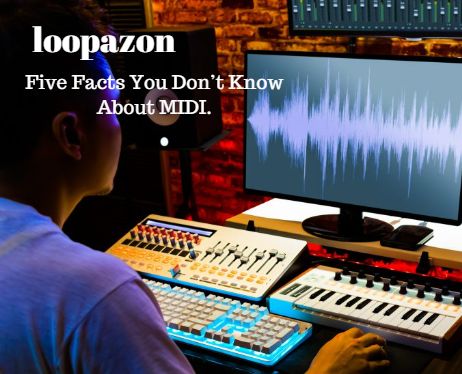Midi Tips & Tricks (Full Guide)
Form a band online, promote your music, buy custom beats, sound parts, and share your Beat or Track as a Royalty Free loop with us. Collaborate to make beats online with the best loop makers from around the world on the Forum for musicians and beat makers. Keep up to date with Music News and learn from FL Studio Video Tutorials and the articles on the Blog. Free DAW Music Software downloads, VST and Instrument Packs for FL Studio, Pro Tools, Logic, Ableton, and how to use the most popular free DAW Software, Fruity Loop Plugins, MIDIs and more.

MIDI stands for Musical Instrument Digital Interface which is basically a tool to convey commands from humans to devices used by producers in different environments i.e. MIDI controllers, messages, files, and channels. It is considered to be an indispensable element of the digital music maker’s collection. This article focuses on five interesting facts that you may not be familiar with instead of listing down every single term that deals with MIDI.
Read: Tips For Creating A Great Mix By St Lucia
You can understand, read, and write your own MIDI bytes!
MIDI messages are a mixture of Status Bytes and Data Bytes. The type of information contained by the data byte is described by status byte such as a message Note On is shown upon pressing a key on the MIDI keyboard. This message contains one status byte and two data bytes which encloses the pitch and speed of the keys at which you pressed.
A detailed tutorial of byte-by-byte look by Dominique Vandenneucker of Arpege Music can be checked here for a better understanding of the MIDI performance.
It is weighty to code MIDI activities in this manner, understanding is more important while troubleshooting the issue. For example, a recent issue occurred where the MIDI clip changed the synth preset. The preset was changed back to the original but the problem was still there and it automatically keeps getting changed until I realize that the clips that were used had program change messages, so this concludes that MIDI messages control functions.
Read: 4 Tips For Creating An Amazing Remix
MIDI & GRAMMY
This has been taken for granted in most DAWs and devices so far, but the technical standard was created by two world-class blue-chip manufacturers Roland's Ikutaro Kakehashi and Sequential Circuits’ founder Dave Smith. With the help of their collaboration, we are able to use one type of connection instead of many. For the remarkable work done by Kakehashi and Smith, they were rewarded with Technical Grammy in 2013.
Your idols possibly use MIDI for their live shows
Since the era of Kakehashi and Smith, new and reliable protocols such as Dante have appeared but MIDI is still widely used to control functions.
Read: Tips for Staying Motivated Through Your Artistic Journey
MIDI is slow compared to other data streams
MIDI bytes are not synced to receiving device which means they are asynchronous. Small variations occur between a MIDI device and a receiving device’s internal clock system as there is no shared clock between the two devices. This roots jitter which is an unfriendly sensation to audio engineers. Whereas synchronous data transfer protocol supports high speed with the requirement of having a common clock signal by one device. Out of the two, synchronous transmission is more competent as it does not have a need for status bytes. It is revealed that other connection protocols are faster in speed than MIDI data transfer. For instance, if we compare the two versions of USB with MIDI we can clearly see the visible speed difference between them. USB 1.0 that was released in 1996 had a speed of 1.5 and 12 Mbit/s whereas USB 4 that released in 2019 had a transfer speed of 40 Gbit/s, while MIDI is at only 31.250 kbps.
It is often said that as MIDI cables are longer than 20 feet this is why the speed of data transfer is slow, which according to some people is a myth. As per Sweetwater, a cable is safe and conservative in a length of 20 feet. It is also discovered that a cable of even 50 feet can also be used for data transfer if the quality is top-notch. But there is an issue with 20 feet data transfer cables as they are unstable, which has nothing to do with data transfer speed it is a matter of electrical failure.
The Evolution of Protocols.
It is about 40 years since the MIDI protocol was discovered, though the association acting as a governing body for the technology is working really hard to improvise MIDI. New techniques and specs are an example of constant modification of MIDI. The most recent update in the modification of MIDI is MPE which is MIDI Polyphonic Expression and MIDI 2.0.
